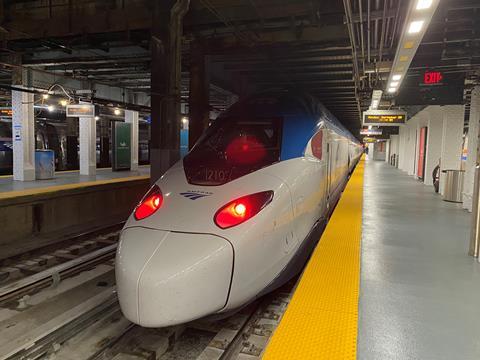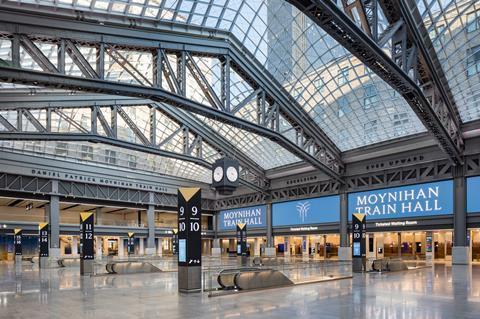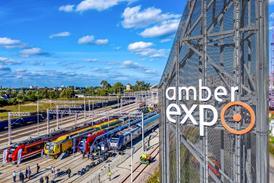USA: The Trump administration has stripped New York MTA of its role in redeveloping New York Penn Station, leaving the federal government in charge through the Department of Transportation and Amtrak.

Federal Transportation Secretary Sean Duffy announced on April 17 that Amtrak would take the lead in managing two interlinked programmes to improve the much-maligned station complex. New York MTA would no longer be involved, even though it manages the Metro-North and Long Island Rail Road, the two commuter rail operators that have an interest in operations at Penn, as well as the Subway lines that bring passengers to and from the Midtown hub.
‘President Trump has made it clear: the days of reckless spending and blank cheques are over’, Duffy said when he announced the changes in grant allocations. ‘New York City deserves a Penn Station that reflects America’s greatness and is safe and clean. The MTA’s history of inefficiency, waste, and mismanagement also meant that a new approach is needed. By putting taxpayers first, we’re ensuring every dollar is spent wisely to create a transit hub all Americans can take pride in.’

According to Duffy, the grants remaining available to Amtrak to progress the rebuilding work are to be cut in value by approximately $120m. A greater role for private developers is envisaged by FRA as part of the Trump administration’s efforts to limit public sector expenditure.
FRA said that Amtrak would now be able to ‘pursue a master developer to examine both reconstruction and potential expansion of the station. The Trump administration’s new strategy prioritises fiscal responsibility, private sector expertise, and Amtrak’s leadership to transform New York Penn Station into a world-class facility while safeguarding taxpayer dollars.’
Saga
Duffy’s decision is just the latest twist in the fraught recent history of the USA’s busiest passenger rail hub. Over the past 15 years, the station has gained a notorious reputation because of the complex layout of its sub-surface concourses and the operational inefficiency of the tracks beneath them. This has led to recurring local and national political interventions aimed at improving the situation.
The main line tracks at the station are used by commuter railroads LIRR and NJ Transit, while Amtrak is the anchor tenant as the inter-city operator. While some Amtrak trains on the Northeast Corridor run through the station via the Hudson and East River tunnels, both NJ Transit and LIRR terminate their trains in the station, while also running numerous empty stock moves to and from yards at either end of the station approaches.

Metro-North commuter trains are expected to be added to the mix from 2028. These will start serving Penn Station in addition to Metro-North’s established New York terminus at Grand Central under the Penn Access project to add local trains to the Hell Gate route already used by Amtrak’s NEC trans running to and from Boston.
Some of the pressure on the station’s passenger amenities has been alleviated in the post-pandemic period by the opening of the Moynihan Train Hall, located across the street from the main buildings and used mainly by Amtrak passengers waiting to board inter-city trains. However, work is now under way to build a second pair of tracks linking Penn with New Jersey under the Hudson River as part of the $16bn Gateway Programme. This has been a priority since 2012 when Superstorm Sandy badly damaged the existing tunnel under the river.
Penn South blocked
The Gateway scheme is ultimately expected to facilitate a big increase in the number of trains able to run between New Jersey and Penn Station — even if Amtrak remains committed to closing the legacy bores after the new link opens to enable them to be thoroughly renovated.
To address the capacity issue, plans have been in development for several years to expand Penn Station by adding more platforms and stabling tracks to the south of the existing footprint. These would have been fed directly from the new tunnels.
However, at the end of March, New York State Governor Kathy Hochul rejected plans for the demolition of ‘Block 780’ — a set of buildings immediately south of Penn Station bounded by 30th and 31st Streets and Seventh and Eighth Avenues—for station expansion.
Hochul’s decision has been cautiously welcomed by many New York civic groups and transport advocates. Many of these groups have been seeking to lobby the station’s various rail operators to adopt a through running model. This could reduce dwell times and empty stock moves by replicating best practice from passenger operations elsewhere.
‘This announcement by Governor Hochul marks a paradigm shift in the planning of Penn Station and the entire region; now the northeast can dream of an interconnected future that only through-running can deliver’, commented Layla Law-Gisiko, President of urban planning think tank The City Club of New York.

However, even a through-running plan might not be a panacea. Holy grail of some Penn Station-watchers is removal of the Madison Square Garden sports and entertainment complex that sits above Penn’s concourses. Doing so would give options to open the station up to natural light, as was the case prior to its controversial redevelopment in the 1960s, while also creating more space at platform level if foundation pillars could be removed. To date though, the owners of the arena have shown little interest in relocating — perhaps in part because of the ease of access by rail and Subway the venue enjoys.
- Skanska says it has completed work on a new set of cross-passages at 42nd Street-Grand Central Subway station under a contract worth $74·2m. This busy hub serves the 7/Flushing and the Lexington Avenue lines.
Go deeper: Read our 2019 feature exploring the complex recent history of New York Penn Station and the plans to renovate it.

















